Data is growing exponentially in the modern age. Businesses across industries rely on data to derive insights and make strategic decisions. This has led to a huge demand for data-driven roles like data analysts and data scientists. In today’s digital world, data is the new oil. Businesses that can leverage data to make better decisions are more likely to succeed. But, data is useless until it is analyzed and interpreted. This is where data analytics and data science come in. While these two terms are often used interchangeably, they have some significant differences. In this blog, we’ll explore data science vs data analytics.
First, let’s explore what is data analytics.
What is Data Analytics?

Data analytics refers to the science of analyzing raw data to discover useful insights. It involves applying analytical techniques on big data sets to identify patterns, trends, correlations and other meaningful information that can drive business growth.
Let’s break this down into simple terms-
Data is facts and statistics collected by organizations. This data can be structured in databases or unstructured in formats like emails, social posts, audio files etc. Now, making sense of vast volumes of data is difficult for humans.
This is where data analytics comes in. It refers to specialized technical processes and software capabilities to automatically process large and complex data. The goal is to filter out useless data and organize meaningful data so it becomes easier to understand.
Data analysts are professionals who apply analytical, statistical and programming skills to refine and transform raw data into valuable insights.
They use data analytics software and tools for four major functions:
- Data Collection: Gather relevant structured and unstructured data from internal databases and external sources.
- Data Cleaning: Fix data inconsistencies, remove anomalies and improve quality of data.
- Data Analysis: Apply analytical modeling, statistics and algorithms to segment data, identify useful patterns, trends and relationships within data.
- Data Visualization: Present analyzed results in easy-to-understand visual formats like charts, graphs and dashboards.
These insights are then communicated by data analysts to business leaders who can take data-driven decisions on pricing, new products, targeted marketing etc. So in short, data analytics is the scientific process of inspecting, cleaning, transforming and modeling data to discover actionable insights for business growth.
Now, let’s understand what data science is.
What is Data Science?
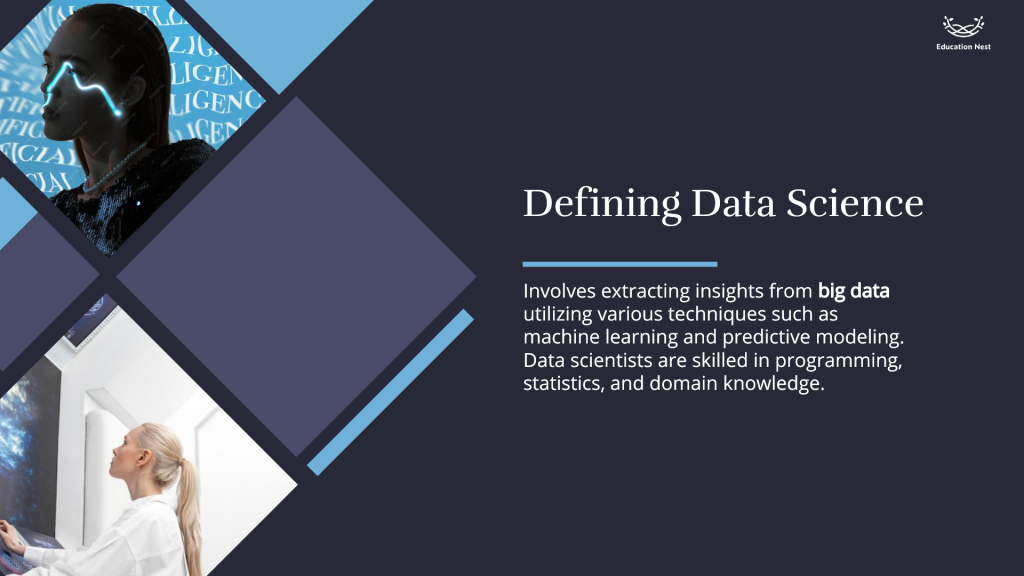
Data science is the broader field of study that encompasses the entire process from data collection to data-driven decision making. It incorporates skills and expertise from multiple disciplines to extract powerful insights and predictions from data.
In simple words, data science is all about unleashing the full potential of data to create business value.
Let’s break it down step-by-step:
- Identify Business Problems: Data scientists collaborate with company leaders to frame relevant business questions that data can help answer.
- Data Collection: They gather structured and unstructured data from diverse sources including websites, IoT devices, social media etc.
- Data Preparation: Just like data analysts, they clean, transform, integrate and format the data to prepare it for analysis.
- Exploratory Analysis: Data scientists perform initial investigations using summary statistics and visualizations to better understand the data.
- Advanced Analytics: This is where data science goes beyond traditional data analytics. Data scientists apply machine learning algorithms to train mathematical models that can predict outcomes from data based on historical patterns.
- Interpretation: They interpret and validate the model outcomes to derive actionable insights tailored to business requirements.
- Deployment: Finally, they integrate and deploy the machine learning models at scale into company systems and processes automatically take data-driven actions.
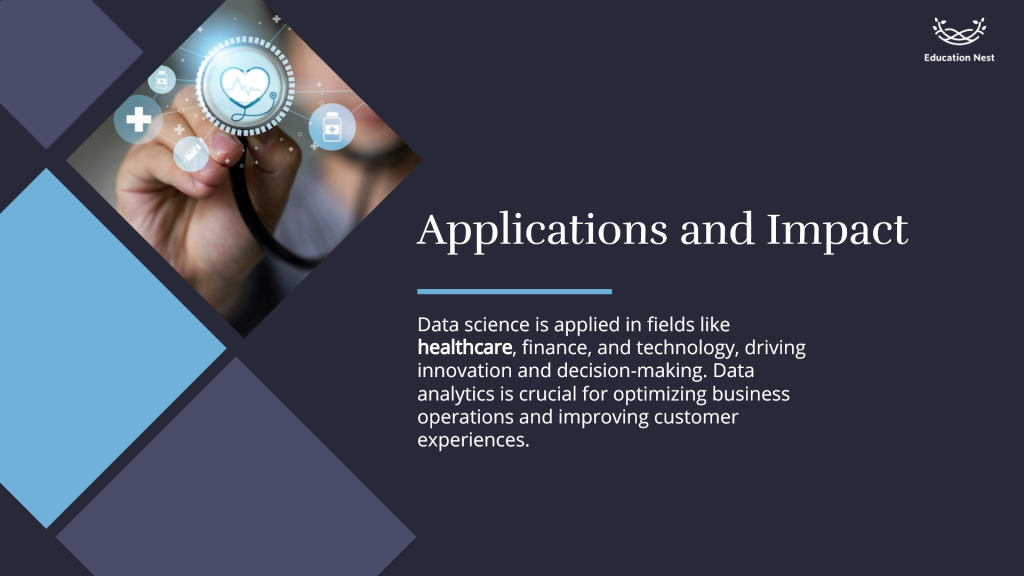
In summary, data science leverages the powerful capabilities of artificial intelligence and machine learning algorithms to unlock deep data insights. Data scientists have expertise in math, analytics, coding as well as business acumen. Their job involves unleashing the hidden potential in company data to create magnified business value.
Now, we will be exploring the applications of data analytics and data science one by one.
Applications of Data Analytics
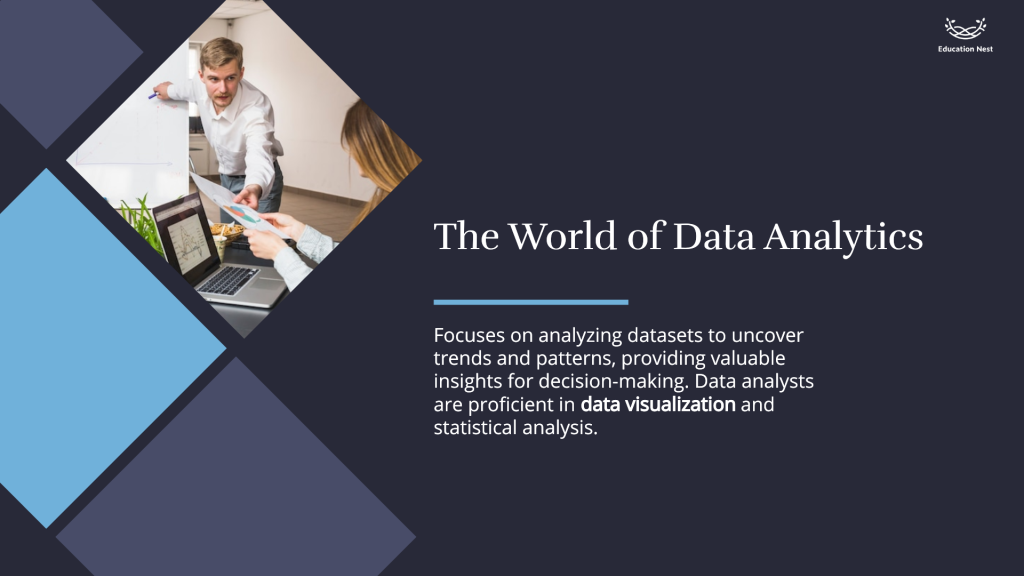
Data analytics techniques have extremely widespread applications across industries. Let’s explore some common real-world business uses to better understand how companies benefit from data analytics:
Marketing
Data analytics drives strategic marketing by enabling companies to analyze customer demographics, behavior, segmented trends, pricing models etc. Key marketing applications include:
- Campaign analysis: Track marketing campaign performance on parameters like social engagement, lead generation, audience reach and sales impact. Optimize future campaigns accordingly.
- Sentiment analysis: Automatically track and classify social mentions as negative, neutral or positive to gauge public perception.
- Web analytics: Analyze visitor website activity to optimize pages, promotions and product suggestions to boost conversions.
Finance
Data analytics helps finance teams use relevant data signals to forecast risks, identify growth drivers and make strategic investment decisions. Some example applications are:
- Risk modeling: Identify high risk investment opportunities and susceptible-to-default customers by analyzing statistical financial models to prevent losses.
- Fraud analysis: Detect fraudulent transactions or claims by flagging anomalies from past data patterns.
- Cash flow analysis: Derive insights from past cash flow data to better plan budgets and optimize capital allocation.
Supply Chain
Analytics tools help supply chain managers streamline inventory, suppliers, warehouses, fleets, delivery routes for smooth logistics operations. This includes:
- Demand forecasting: Predict future inventory needs based on past sales data, seasonality, promotions and other factors.
- Delivery optimization: Plot optimal routes and shipping modes to minimize transit costs and delays.
Also Read:
What is Supply Chain Management in Ecommerce
The list of analytics applications is endless spanning healthcare, manufacturing, sports and more. Data analytics drives fact-based strategic planning across every business function and industry. It has become an indispensable investment for lasting competitive advantage.
Applications of Data Science
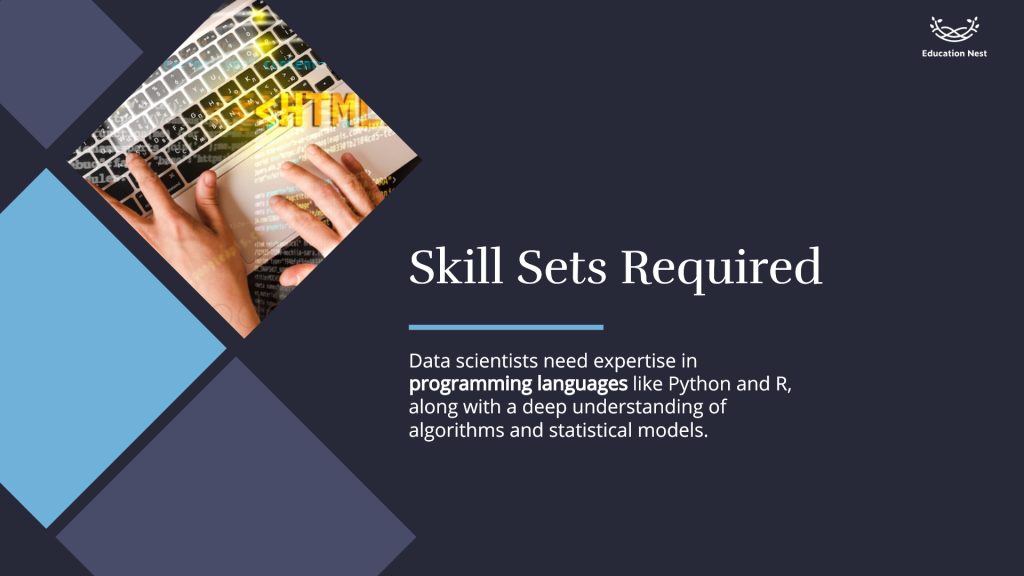
Data science empowers companies to leverage predictive insights from data to automate and improve business processes. This drives higher productivity, growth and competition. Let’s explore some common real-world applications:
Personalized Recommendations:
Many consumer platforms use data science to analyze user activity data and suggest personalized product or content recommendations that individuals are most likely to be interested in.
For example, Netflix applies machine learning algorithms on viewers’ watching patterns and ratings to suggest new shows that align with their tastes and preferences. This results in higher user engagement.
Predictive Maintenance:
Industrial equipment like wind turbines, elevator systems and assembly line robots generate tons of performance data. Data science techniques help predict maintenance needs to minimize downtime and cut cost.
For instance, sensors in an aircraft engine track temperature, pressure and vibration data. Data science models process this to forecast failure scenarios so issues can be prevented with timely repairs and save lives.
Fraud Detection:
Banks and financial firms lose billions to fraud every year. Data science builds complex models profiling genuine user behavior. Transactions deviating from these patterns are automatically flagged as high fraud risks, allowing proactive checks.
Chatbots:
Speech and language processing abilities from data science power chatbots to understand customer queries in human terms and directly offer solutions from vast knowledge bases rather than keeping people on hold.
In essence, data science applications in recommendation systems, predictions, fraud alerts and conversational AI drive immense value across sectors. It has become an integral pillar of business strategy in the digital age.
By now, you must have understood the differences between data science and data analytics. Finally, let’s summarize the differences and explore Data Science vs Data Analytics.
Data Science vs Data Analytics
Let us explore the difference between data science vs data analytics in tabular format.
| Basis of Comparison | Data Analytics | Data Science |
| Goal | Gain business insights from current data | Predict future outcomes using advanced analytics |
| Focus Area | Learn from past data to understand performance and patterns | Build high accuracy predictive models |
| Type of Analytics | Diagnostic – What happened? | Predictive – What could happen? |
| Tools and Techniques | SQL, spreadsheet, data mining, dashboards | Python, R, Hadoop, neural networks |
| Expertise Required | Statistics, SQL, data visualization | Machine learning, programming, advanced math |
| Key Activities | Collect, clean, analyze and report data insights | Develop ML models and algorithms that self-learn |
| Business Impact | Optimize business processes and strategy | Automate processes, personalized customer experiences |
We hope this helped you understand the difference between data analytics and data science.
Conclusion
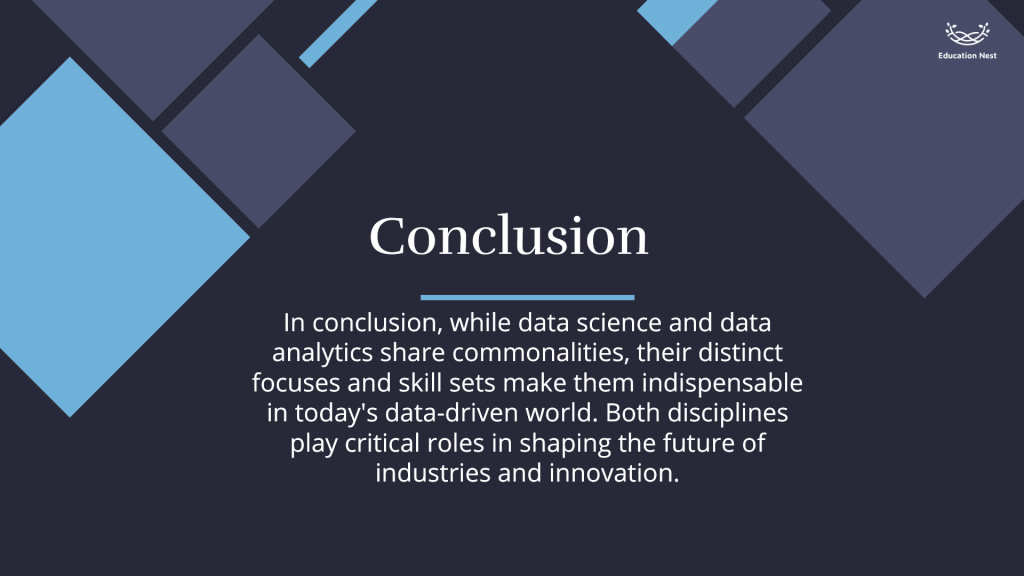
Data analytics delivers tangible business value by extracting insights from available data assets using standard statistical tools. Data science explores deeper data relationships to build machine learning models that predict future outcomes. Data analysts adopt a business-centric approach while data scientists employ an expanded toolkit that leverages advanced algorithms. But they share underlying abilities to investigate, synthesize and clearly communicate data-driven recommendations. Hopefully this breakdown has helped differentiate these two hot digital economy roles. Data creation will only intensify in times ahead across industries. So demand for both talented data analysts and data scientists will continue to surge exponentially.
